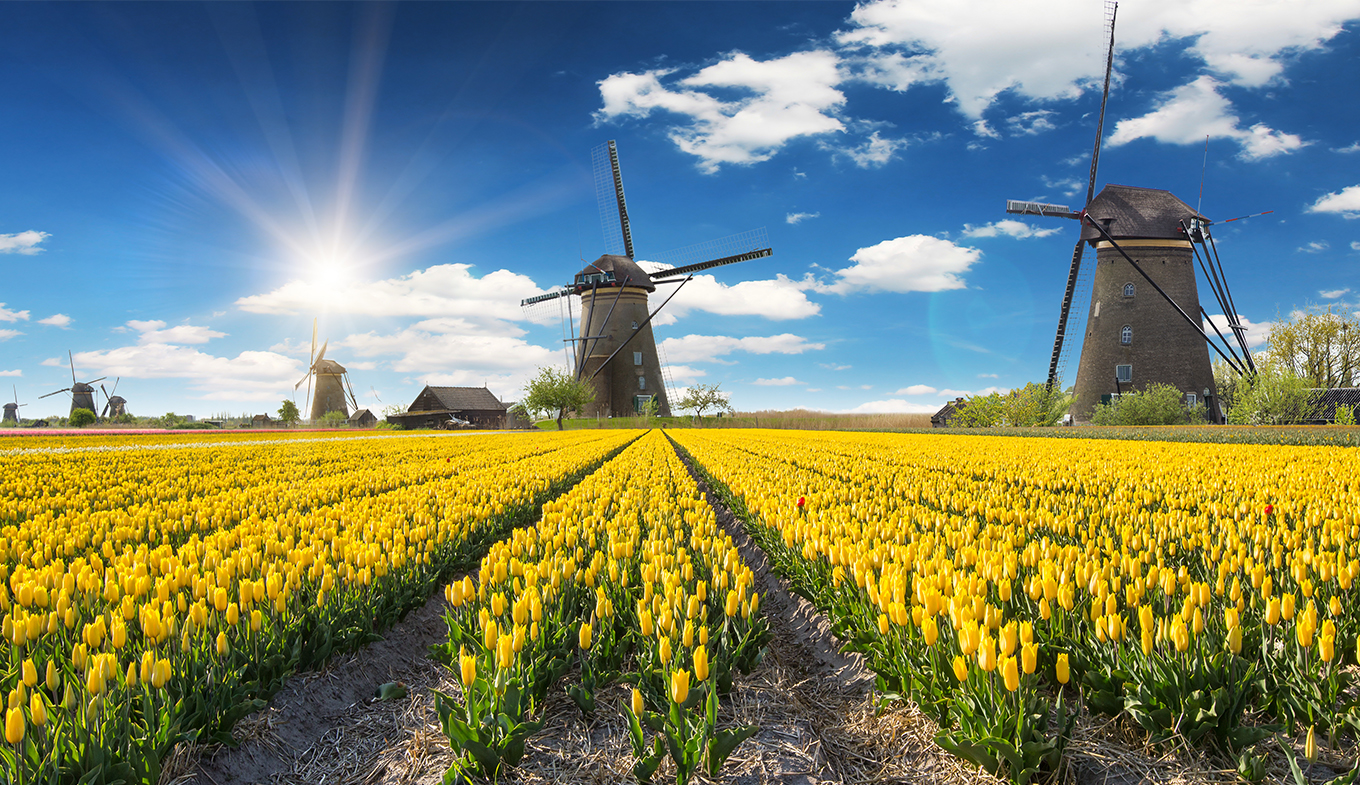The climate in Holland is temperate, being close to the North Sea and the Atlantic Ocean. Southern and westerly winds predominate this relatively a flat land area so it is typically breezy. Summers are warm but not excessively hot (or if it happens it does it rarely), and winters are also moderate. However, as Holland lies in northwest Europe, weather can change from day to day.
Climate of Holland
On the average, daytime temperature varies from 2C to -8C in the winter. In the summer, the daytime temperatures could be anywhere from 17C to 20C. Rainfall happens all throughout the year with clouds almost perpetually hovering over Netherlands.
There are four distinct seasonal patterns, but because it is a compact area, the changes are not severely sharp in various provinces and cities.
Coastal regions such as the south provinces of Holland enjoy the mildest climate throughout the year as well as the lowest rainfall.
The coldest months of the year are January (with average temperatures of -1 C to 4 C) and February and the warmest months are July and August (with temperatures reaching up to 22C).
The wettest months are August and September where rainfall occurs across 18 days and the driest month is March.
January also has the highest number of days with frost on the ground (15 days). There is snow, rainfall and hail in Holland.
During fall and winter, unexpected climatic changes bring about gales and uncomfortable weather with humidity going up to 88% in December.
Holland also experiences foggy weather during the winter and during heavy spells of cold weather, the bodies of water such as the rivers and the canals freeze over.
In the spring, some short but heavy rain showers can also occur. During the summer, thunderstorms can also occur during the midday due to the higher temperatures.
Average rainfall in Holland is about 30.2 inches or 2.5 inches per month. Average annual relative humidity is 77.3%. Whilst there are fewer days of rainfall during the summer, they tend to be heavier.
Visitors to Holland usually come around the summer months of July to August, when the weather is agreeable for walking outdoors and exploring the natural beauty of Holland. This is the time of the year, however, when the cities are packed.
 The spring months of April and May are also great times for a leisurely trip to the country, as it is the time of the year when the flowers are in full bloom and the parks are all exploding in colour. April is the season for daffodils and May is when the tulips bulbs are in bloom.
The spring months of April and May are also great times for a leisurely trip to the country, as it is the time of the year when the flowers are in full bloom and the parks are all exploding in colour. April is the season for daffodils and May is when the tulips bulbs are in bloom.
For winter sports enthusiasts, December and January are the best months to plan a winter wonderland tour of Holland. When the temperatures drop below freezing point for some time (which actually only happens in rare occurrences), the canals and rivers become perfect grounds for ice skating.
Because rainfall happens and is spread all throughout the year, rainwear is always a part of the required clothing when travelling to Holland.
Here are some indicative climate indicators for some of Holland’s major cities:
Amsterdam: Situated 6 feet above sea level, average temperature range in the capital city is from 9C to 16C. The weather in the city is generally pleasant all throughout the year. January and December are the coldest months while July and August are the hottest months.
Rotterdam: Annual average temperature ranges from 6C to 17C. August is the warmest month and February is the coolest month. May has the most number of sunlight hours (averaging 7 hours of sunlight per day).
Maastricht: December and January are the wettest months, with an average of 18 days of rainfall per month. Average temperature range is from 2C to 10C. The warmest month is July.
Eindhoven: Eindhoven is located 65 feet above sea level. Average temperature range is from 8C to 18C. January has the highest average precipitation level at 80 mm.
Groningen: Average minimum temperature is 4C and average maximum temperature is 12 C. November is the wettest month with an average of 14 days with rainfall.
The Hague: Average minimum temperature for the seat of the government in the Netherlands is 3C and average maximum temperature is 9C. Average warmest month is August and coldest month is February.
Utrecht: The wettest month is January followed by the coldest month which is February. Warmest months are from July to August with temperature of 22 C. Average minimum temperature is 2C and average maximum temperature is 9C.